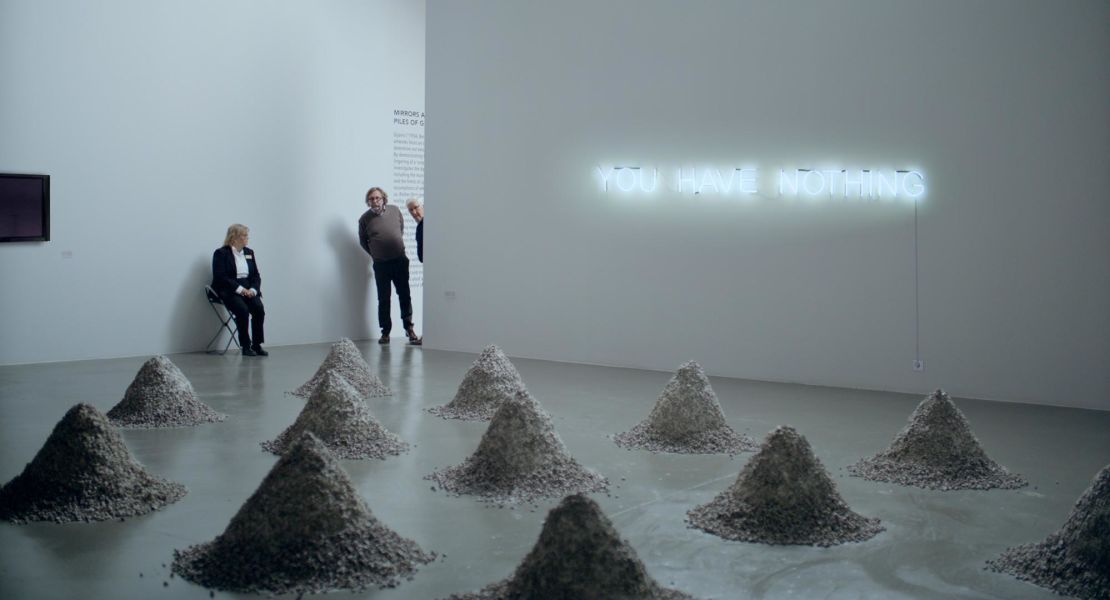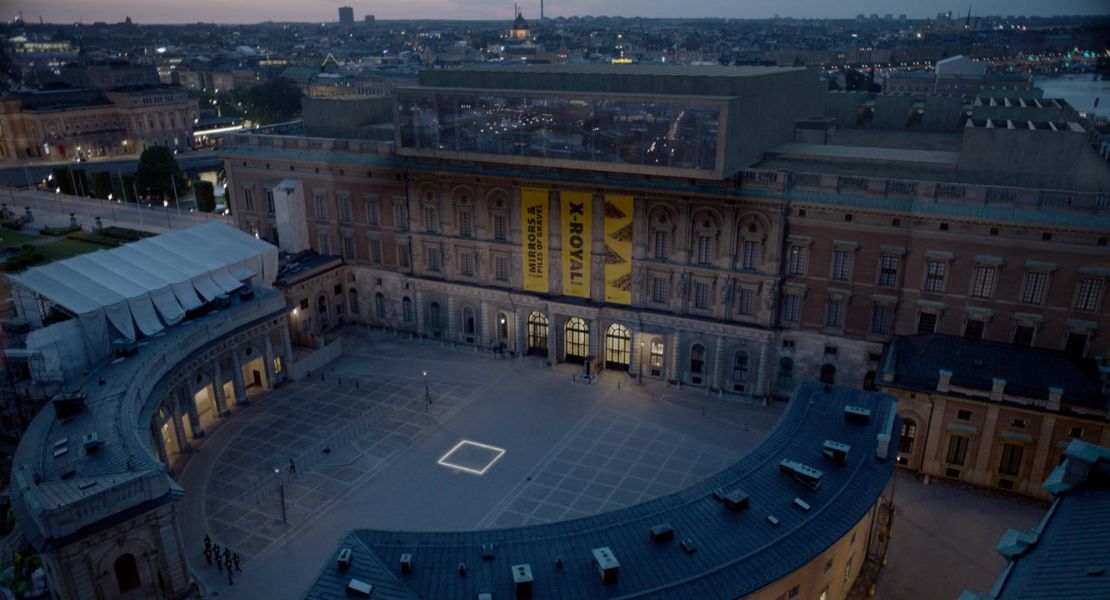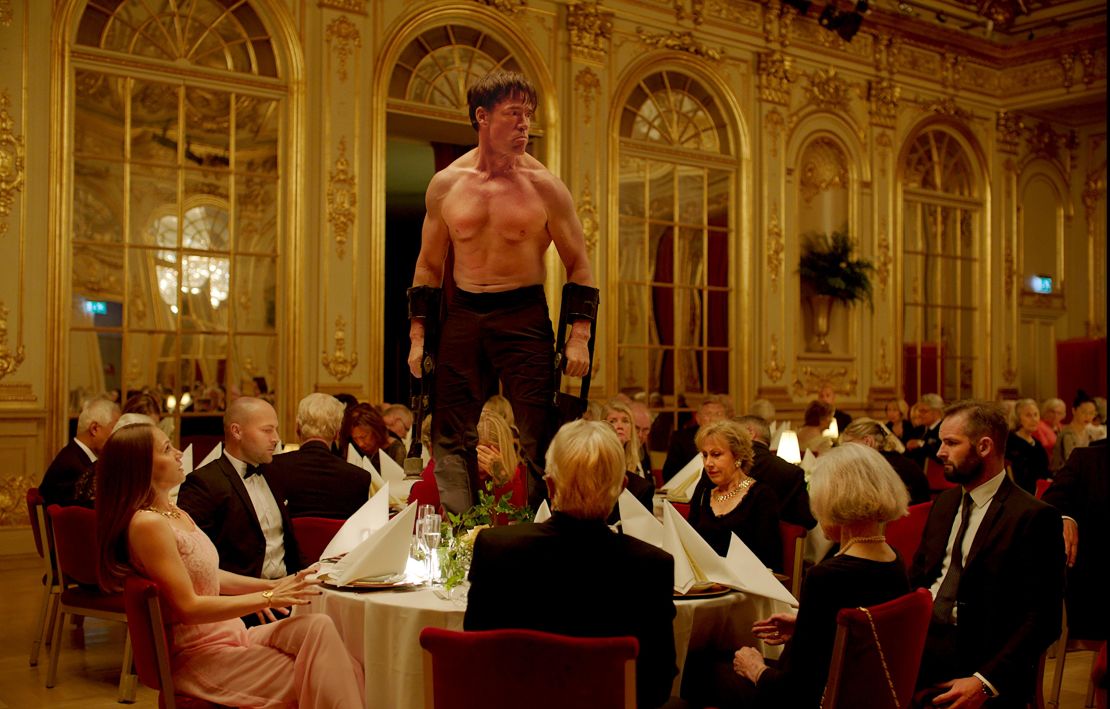A thorough take-down of the contemporary art world is already underway in “The Square” when Julien, a high-flying creative, sits down to describe his latest installation. Verbose and obfuscating, he speaks a lot but says very little.
“Garbage,” we hear from the audience. “Go home.” Every attempt by the artist to outline his work is punctuated with an insult. Eventually it’s revealed his heckler has Tourette syndrome and the gag lands. You’d expect the film to move on, but director Ruben Ostlund decides to suspend the narrative for another minute or two, escalating our discomfort with this involuntary echo.
Ostlund revels in this type of awkwardness. These moments have become the Swede’s calling card, and they’re all ruthlessly cutting.
After skewering the cravenness of modern masculinity in the 2014 drama “Force Majeure,” the director has turned his attention to contemporary art in “The Square,” debuting in competition at the Cannes Film Festival. Dissecting the whimsies, hypocrisies and hollow values espoused by the artistic community, his appraisal is far from glowing. When art goes wrong, it goes very wrong, appears to be his argument.
For anyone wondering what right a film director has to make these criticisms, the clue is in the title. “The Square” began life as a real gallery installation at the design museum Vandalorum, Sweden in 2014, created by Ostlund in collaboration with producer Kalle Boman.
“The Square is a sanctuary of trust and caring. Within it we all share equal rights and obligations,” read its manifesto. Designed to promote altruism and remind us of the social contract that binds us all, it was moved into a public plaza in Varnamo in 2015.
“The city has started to use it in many different ways,” Ostlund tells CNN. Along with concerts and wedding proposals, “functionally handicapped people who lost their benefits from the state went there and protested … It was close to a high school shooting in Sweden and (students) gathered together (there), to find comfort together.”
In the movie, Ostlund recreates The Square in a fictional Sweden where the royal family has been abolished and their palace turned into an art gallery. We follow its urbane chief curator Christian, played by Claes Bang, whose cerebral job is offset by his shallow lifestyle.
His fiefdom is a series of white cubes that transform objects into art with their stupefying blankness. One installation, made from piles of rubble and scree beguiles the clientele but confounds the cleaners. Even the curator can’t quite take it seriously when things go awry.

In the run up to the launch of “The Square,” Christian accidentally green-lights an exploitative viral marketing campaign, which flips the installation’s values on its head and lends infamy to the project.
“How much inhumanity does it take before we access your humanity?” becomes the campaign’s goading tag line.
“The media freaks out and gets super disturbed, but they walk straight into the trap,” Ostlund says.
Not content with satirizing the art world, Ostlund ridicules the media’s insatiable appetite for controversy. To receive meaningful coverage, “your competitors aren’t other museums, but natural disasters and terror threats,” a marketing agent tells gallery staff.

“I think (the media) is in many ways treating terrorist events and things like that in a very, very strange way, and in a very counterproductive way,” Ostlund says. Consensus doesn’t make good news, discord does, say the marketers.
As Christian extolls the humanistic values of “The Square,” Stockholm’s many homeless inhabitants drift in and out of the frame. The curator accepts millions of kroner from wealthy donors but “I don’t have any cash” is his constant refrain. It’s clear that while “The Square” is a sound concept, its ideals do not extend beyond its borders.
“There are many rituals and conventions in (the art) world that makes it very separate from what’s going on outside the walls of the museum,” the director explains. “We’re trying to attack that world a little bit and make them ask questions about what we are doing.”

Illustrating this point is an unnerving scene involving a performance artist, played by Terry Notary, acting as a monkey. Occupying the space between art and social experiment – and partly inspired by musician GG Allin, according to the director – the audience at a black tie gala is told not to make eye contact with or confront “the animal” as he prowls between the dinner tables. They remain passive, even as he begins to brutally assault a female guest. It is the bystander effect taken to a chilling nth degree.
“Art is an opportunity to transcend all kinds of taboos,” muses Christian. But should art do so for the sake of art?
Through art Ostlund reinforces the delicacy of the social contract and how easy it can be broken. Beneath the pleasantries, the law of the jungle still stands. However, there’s a suggestion that art could also be society’s redemption. After all, the director says, a human is but a “monkey with culture, trying to deal with life.”
Straddling both art and film worlds, the Swede appears ambivalent towards his mark, rather than condemnatory. So how should Ostlund’s artist friends feel about “The Square”?
“If they are artists that actually have some content in their work, I don’t think they will be afraid,” he says. “But if you’re playing the role of an artist and afraid of being (revealed), of course you will feel threatened by the film.”












